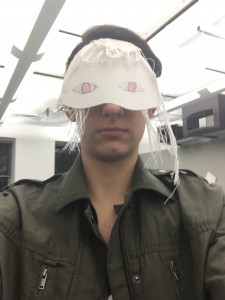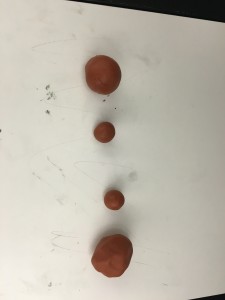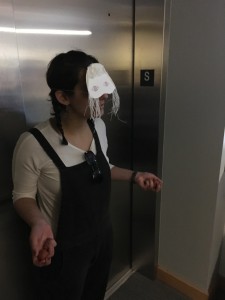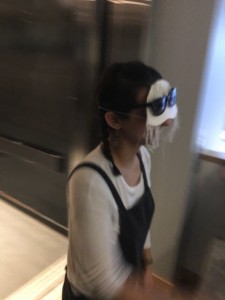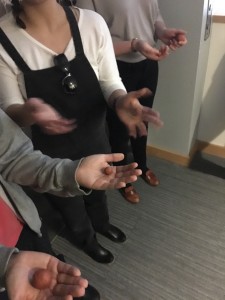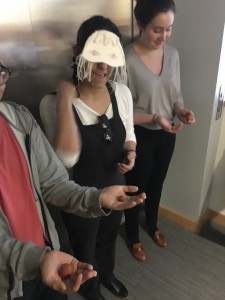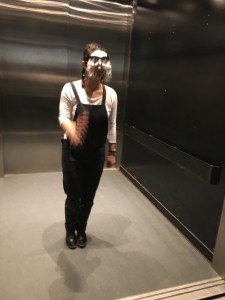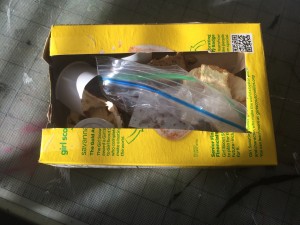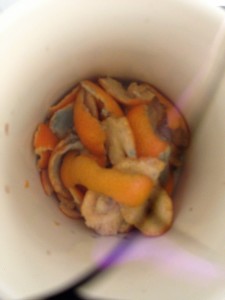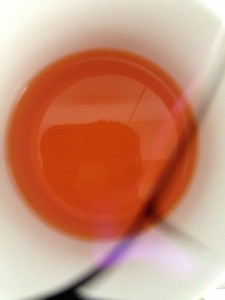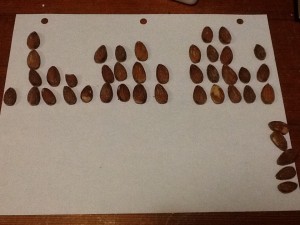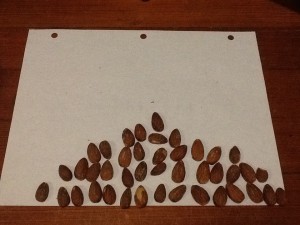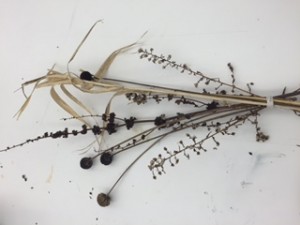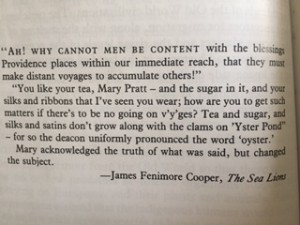Emerging Themes
- Writing in obscure fashions.
John’s video “Remember Me, Please.” featuring the writing in reverse. (5/50 Assignment)
Sophia’s “Dismemberment” object (5/50, Cosmogeny story)
Sophia’s “Why Are You Crying” object (5/50, Why Are You Crying story)
Gabrielle’s objects 1-12 from “Easter, 1996” (the cut-out letters we rearranged together)
John’s “You & Me” story objects 1 (The World & Us) and 10 (Let Go)
- Creation Myths
Molly’s 5/50 Story #3 – Adam & Eve
Molly’s 5/50 Story – The Origin of Love
Multiple Objects from Sophia’s Cosmogeny Story (ex nihilo, in the beginning, etc.)
(Bit of a stretch here) Omar’s “The Land Before Time” story just based on the name alone.
- Music & Songs (perhaps too broad of a theme)
Carina’s bad singing performance in “Failure” (5/50)
Maddie singing “Human Again” + Carina’s juxtaposition piece involving the masks, the music, etc.
Omar’s lecture + show-don’t-tell piece on music reading (ELI5 + Show-don’t-tell)
Maddie’s lecture on chords and jazz (ELI5)
The Titanic music from Carina’s story (5/50)
Kimmy’s Beyonce-related story (5/50)
Phoebe’s 4th Story: “Sing us a Song” (5/50)
Bailey’s spooky music/chanting (Five Senses)
- Our Self-Image Changing from Child to Adult
Maddie’s Hunger Games Story (5/50)
My Job Application Video Pieces + Sophia’s juxtaposition (5/50, juxtaposition)
Carina’s decision to research the Syrian refugee crisis (ELI5, Show-don’t-tell)
Omar’s Adventures in the Osaka Red Light District (5/50)
Kimmy’s “Ripped from the Womb”, “A Summer of Sisterhood” stories (5/50)
Gabrielle’s “Easter, 1996” story (5/50)
- Self-Reflection/Self-Recognition (again, perhaps too broad)
My family’s history of alcoholism, my anxiety disorder (5/50)
Paige’s story about OCD (5/50)
Molly’s story “Realizing Tourettes” (5/50)
Carina’s story “Failure” (5/50)
Maddie’s story “Dead Squirrel” (aka “Hunger Games” again) (5/50)
Bailey, “Brothers” (5/50)
Omar, “What’s in a Name? Puns, probably.” (5/50)
Kimmy’s 5 Senses Piece and her Show-don’t-tell piece.
____________________________________________________
2-3 things of mine which interest me:
My “Juxtaposition” performance piece, the letter from my dad (5/50), and my job application videos (5/50) interest me the most because they all explore what drives my anxiety and insecurity … and sharing that stuff with other people makes me feel significant.
_______________________________________________________
3-5 things of others which interest me:
Omar’s beat poetry “Juxtaposition” performance, Bailey’s “Show-don’t-tell” performance, Carina’s “Juxtaposition” piece, and Paige’s object in her “The Interestings” story entitled “Jules Jacobsen, looking back.” (5/50).
Why do these interest me? Omar’s writing and delivery are incredible and he deserves a TV show, Bailey’s placement of the audience as a vital part of his performance was really stunning, Carina’s experiential piece in the AMT blew me away, and Paige’s written piece struck a chord with me because I’ve been considering law school but I’m worried I’d become that man telling the story. (So, in short, I remember them the most vividly.)
